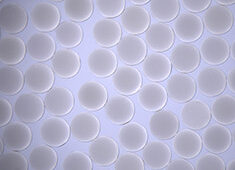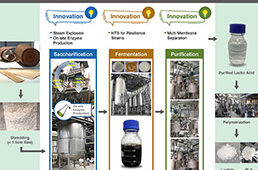Researchers from North Carolina State Univ. (NC State) and the Univ. of Texas have revealed more about graphene’s mechanical properties and demonstrated a technique to improve the stretchability of graphene—developments that should help engineers and designers develop new technologies that make use of the material.
Graphene is a promising material that is used in technologies such as transparent, flexible electrodes and nanocomposites. And while engineers think graphene holds promise for additional applications, they must first have a better understanding of its mechanical properties, including how it works with other materials.
“This research tells us how strong the interface is between graphene and a stretchable substrate,” says Yong Zhu, an assoc. prof. of mechanical and aerospace engineering at NC State and co-author of a paper on the work. “Industry can use that to design new flexible or stretchable electronics and nanocomposites. For example, it tells us how much we can deform the material before the interface between graphene and other materials fails. Our research has also demonstrated a useful approach for making graphene-based, stretchable devices by ‘buckling’ the graphene.”
The researchers looked at how a graphene monolayer interfaces with an elastic substrate. Specifically, they wanted to know how strong the bond is between the two materials because that tells engineers how much strain can be transferred from the substrate to the graphene, which determines how far the graphene can be stretched.
The researchers applied a monolayer of graphene to a polymer substrate, and then stretched the substrate. They used a spectroscopy technique to monitor the strain at various points in the graphene. Strain is a measure of how far a material has stretched.
Initially, the graphene stretched with substrate. However, while the substrate continued to stretch, the graphene eventually began to stretch more slowly and slide on the surface instead. Typically, the edges of the monolayer began to slide first, with the center of the monolayer stretching further than the edges.
“This tells us a lot about the interface properties of the graphene and substrate,” Zhu says. “For the substrate used in this study, polyethylene terephthalate, the edges of the graphene monolayer began sliding after being stretched 0.3% of its initial length. But the center continued stretching until the monolayer had been stretched by 1.2 to 1.6%.”
The researchers also found that the graphene monolayer buckled when the elastic substrate was returned to its original length. This created ridges in the graphene that made it more stretchable because the material could stretch out and back, like the bellows of an accordion. The technique for creating the buckled material is similar to one developed by Zhu’s laboratory for creating elastic conductors out of carbon nanotubes.
The paper was published online in Advanced Functional Materials.
Source: North Carolina State Univ.




